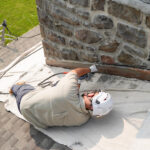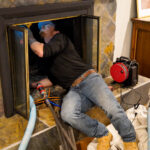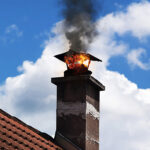Flash Forward: Ingenious Chimney Flashing Hacks for Leak-Proof Roofs
Like residents in other midwestern cities, those in Woodruff Place, Lockerbie Square, and the greater Indianapolis area appreciate their warm, inviting fireplaces. These cozy hearths are often attached to a masonry chimney, which is typically the highest point of the house. However, the impact of humid summers and snowy winters results in over six feet of precipitation each year! This significant amount of rain and snow puts the flashing—the sheet metal system that seals the seam between the chimney and the roof—in a vulnerable position, making it prone to water leaks. Protect your home with these ingenious chimney flashing hacks for leak-proof roofs:
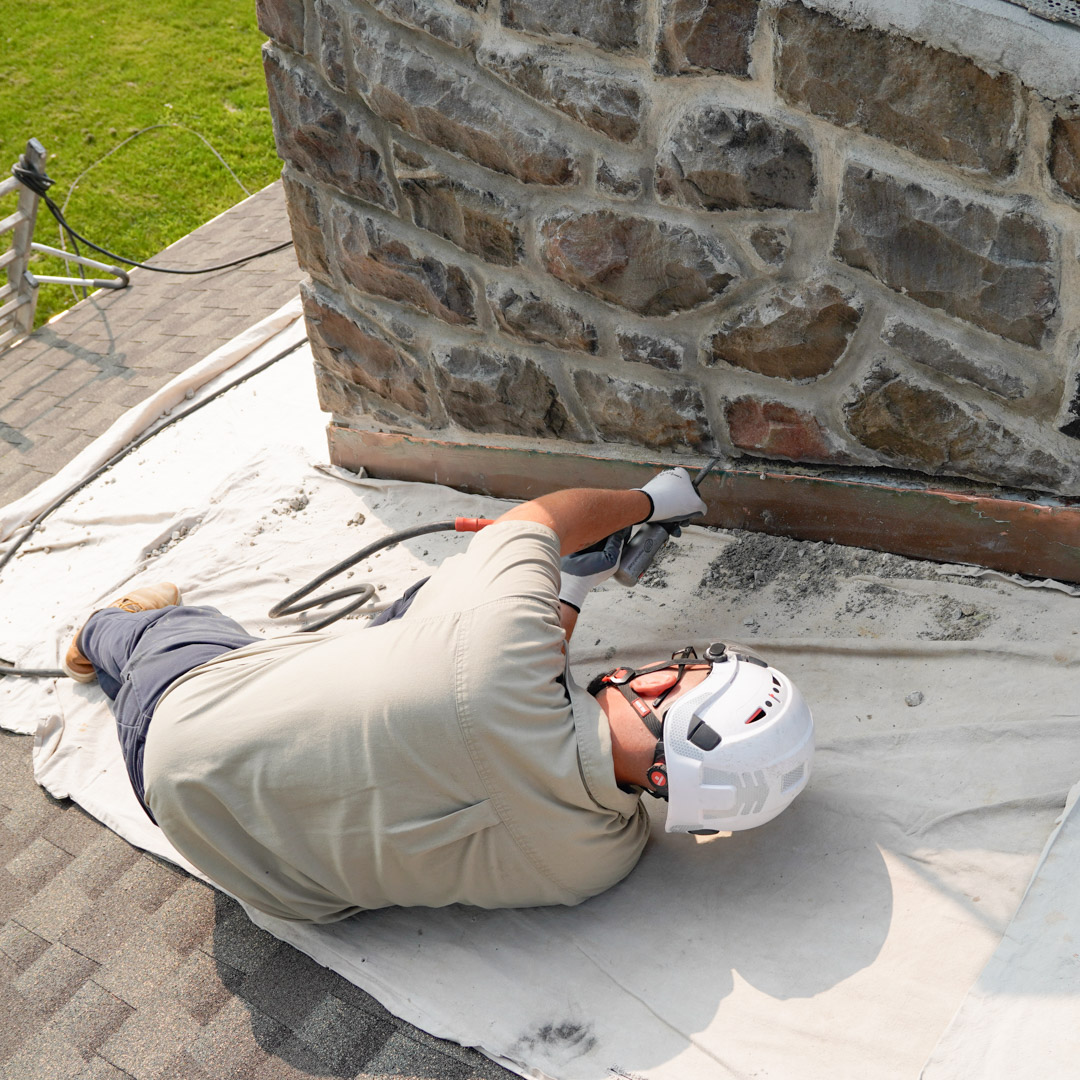
What is Chimney Flashing?
Chimney flashing is a metal system installed at the junction where the chimney meets the roof. The primary purpose is to prevent rain and melting snow from leaking into your home’s roof, attic, or walls. Flashing consists of overlapping durable metal sheets of aluminum, galvanized steel, or copper. It is essential for preventing costly damage from water leaks, such as wood rot and mold growth.
Hack #1: Understanding Flashing Installation
The flashing installation process can be tricky and demands precision. It must be done correctly and in the proper sequence: improper installation is the most common cause of flashing failure. The key to success is understanding the overlap, where each piece overlays the one beneath it, ensuring a continuous path for water to flow down and away from the structure.
- Base Flashing: This is the large, single piece of flashing located on the lower side or downward slope of the chimney. A similar piece, often referred to as the ‘cricket’ or ‘saddle’ flashing, is installed on the upper side of the chimney to divert water around the chimney.
- Step Flashing: These are small, L-shaped pieces installed along the sides of the chimney, interwoven between the shingle courses in a step-like pattern.
- Counter Flashing (or Cap Flashing): This metal layer is embedded directly into the chimney’s mortar joints and then bent down to overlap the step flashing and the base flashing, shedding water away from the structure.
Hack #2: Making Leak-Proof Seals
The most common flashing mistake is relying on temporary fixes. Black roofing cement (tar or caulk) is a frequent culprit, as it eventually dries, cracks from UV exposure, and traps water, leading to accelerated rust and corrosion. Flashing must be installed in an overlapping fashion. This process ensures that water diverts away from the structure if the sealant cracks or erodes.
Hack # 3: The Ice & Water Shield
For homes in Central Indiana facing severe winter weather, many chimney and roofing professionals recommend installing an ice and water shield beneath the flashing. This is another ingenious hack that acts as a second line of defense against the formation of ice dams and wind-driven rain, which frequently cause leaks in the Midwest.
Hack #4: The Ingenious Chimney Cricket
Chimneys wider than 30 inches are at an increased risk of water pooling, which is a perfect recipe for roof leaks. Installing a cricket (also known as a saddle) behind the chimney prevents water pooling, thereby eliminating unnecessary stress on the back flashing.
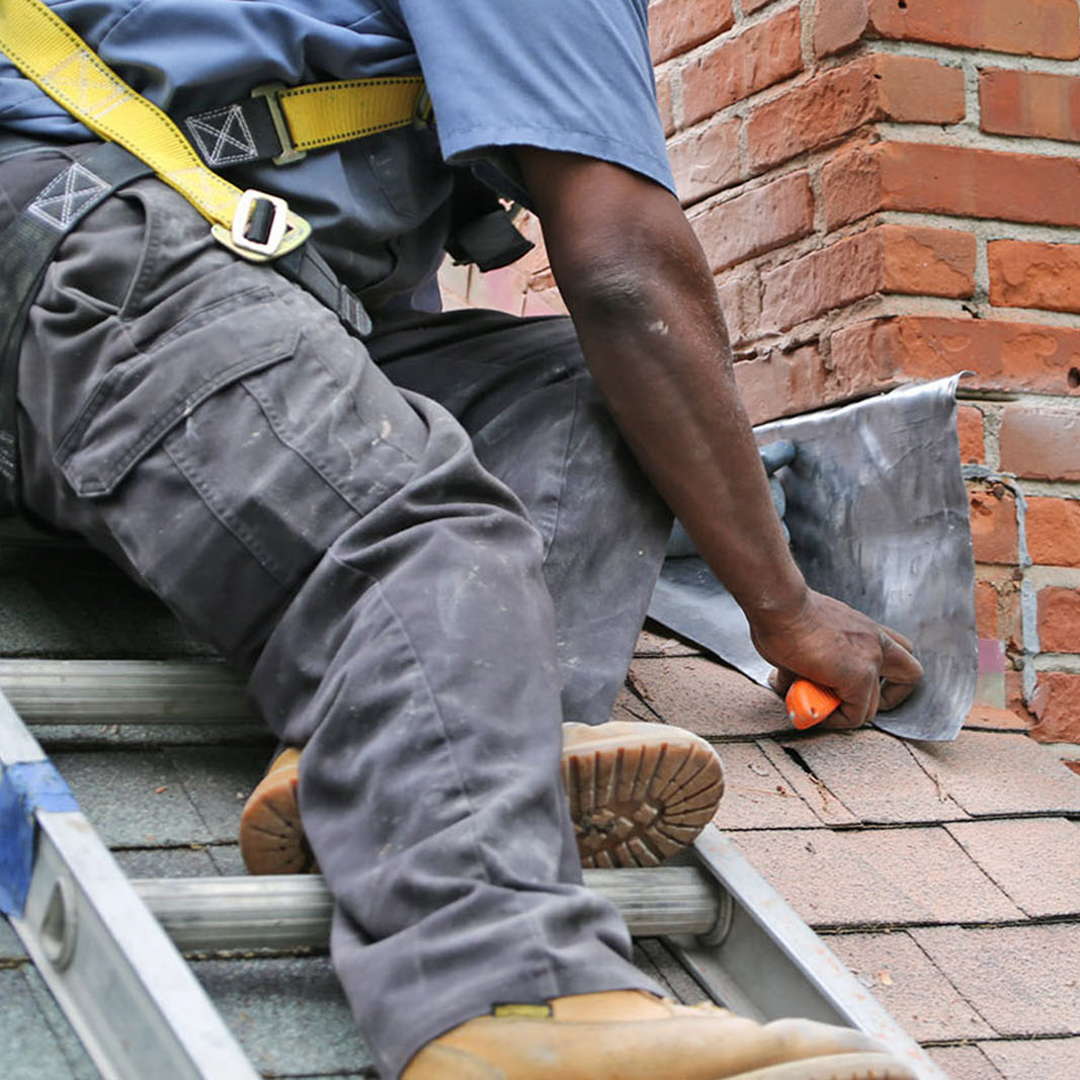
Hack #5: Choose Quality Flashing Materials
The choice of flashing material is a critical factor in ensuring a leak-proof roof. Therefore, it’s essential to select the appropriate material for your specific requirements.
- Aluminum flashing is a lightweight, rust-resistant material, making it a popular choice among contractors. However, it is susceptible to corrosion.
- Copper flashing is renowned for its exceptional durability, as it can last over 50 years with proper maintenance and is highly resistant to rust and corrosion.
- Galvanized Steel flashing has a zinc coating to prevent rusting, making it a robust option for various weather conditions. It’s often preferred for its strength and affordability. However, the galvanized coating can wear away, allowing rust to form.
- Stainless Steel flashing is the most durable and corrosion-resistant option available. It is ideal for areas exposed to harsh environments and is less likely to warp.
Your Chimney Flashing Repair Experts in Greater Indy
If you suspect a leaky chimney or want to ensure your roof is leak-proof, flash forward to Chimney Solutions. Our team of licensed professionals in the greater Indianapolis, IN, area is dedicated to providing chimney inspections, cleaning, and expert repair services. Please speak with our chimney professionals by phone or through our contact form.


